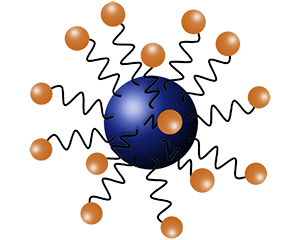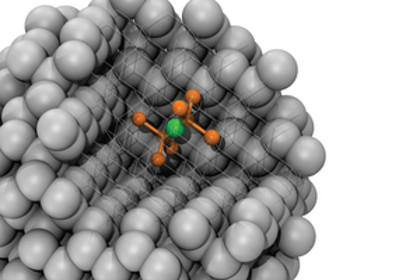Metal Nano Particle , Metal Nano particle PhD Nano _ Microelectronics
Note: The synthesis and properties of metal nanoparticles are a major field in nanochemistry. The use of nanoparticles is especially important in applications of nanotechnology, because when the size of metal particles reaches the nanometer scale, it often shows optical, magnetic, electrical and chemical (catalytic) properties.
The use of fine metal particles in decomposition is particularly important because of their irregular surface - which is constantly reconstructed for adsorption compatibility - and their size-dependent electronic properties, which can be adjusted to optimize activity and catalytic selection. Be. Our team is able to synthesize a wide range of metal nanoparticles and metal oxide nanoparticles for applications in catalysts, food, energy, etc. A major challenge in the preparation of nanoparticle colloidal suspensions is stability, as they tend to shrink to minimize surface stress. For this reason, control of both nuclei and growth processes is crucial for the preparation of stable monodisperse colloidal suspensions. In this regard, there are several pathways for the synthesis of nanoparticles, including chemical methods, metal evaporation, laser gas decomposition, gas phase methods and plasma chemical reduction methods. The Pd particles below the nanometer dispersion are successfully prepared, which are first prepared in toluene (organosol) and, if desired, slightly transferred to the aqueous phase. This method allows the acquisition of aqueous solutions with high concentrations of dispersed Pd nanoparticles (44 mM) and stable suspensions for long periods (months).
Nanoparticles are highly regarded both in industry and in the natural sciences due to their widespread use. While natural materials have fixed physical properties regardless of size, the size of a nanoparticle determines its physical and chemical properties. Therefore, the properties of a substance change as its size approaches the nanoscale and the percentage of atoms on the surface of the material becomes significant. An important feature of all nanostructures is that the number of surface atoms in them is greater than the number of volume atoms. This ratio increases with decreasing nanoparticle size. Therefore, nanoparticle size is an important feature. The range of change in nanoparticle activity depends on the nature and shape of the nanostructure. With However, if the energy field of nano-energy electromagnetic radiation is comparable if certain range The wavelength changes dramatically with the occurrence of chemical reactions in the irradiated material. The activity of nanoparticles up to 100 nm will be significant.
Conclusion :
Synthesis and characterization of metal nanoparticles is a major field in nanochemistry. The use of nanoparticles is especially important in applications of nanotechnology, because when the size of metal particles reaches the nanometer scale, it often shows optical, magnetic, electrical and chemical (catalytic) properties.
Researcher and author: Dr. ( Afshin Rashid)
PhD in Nano-Microelectronics




